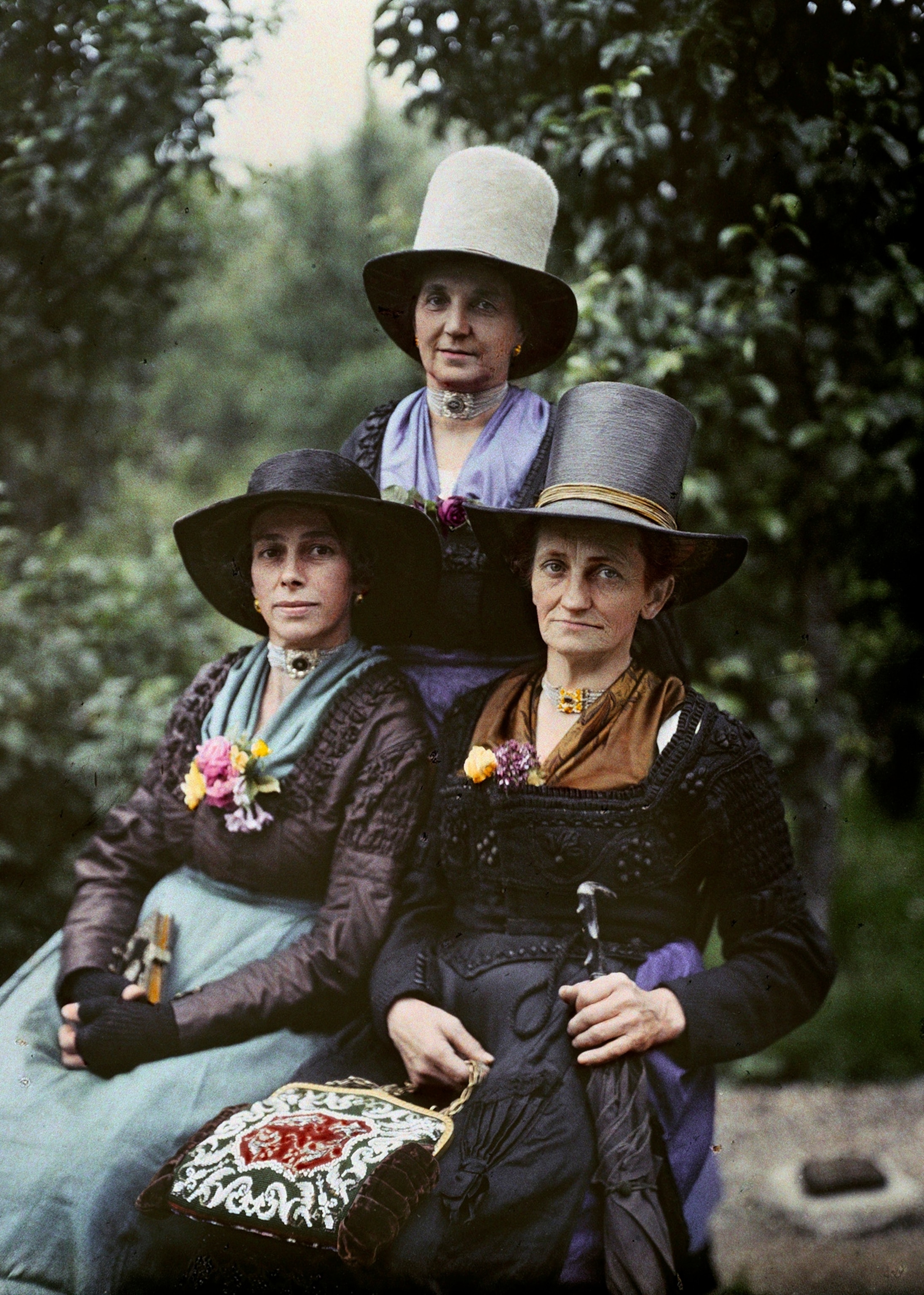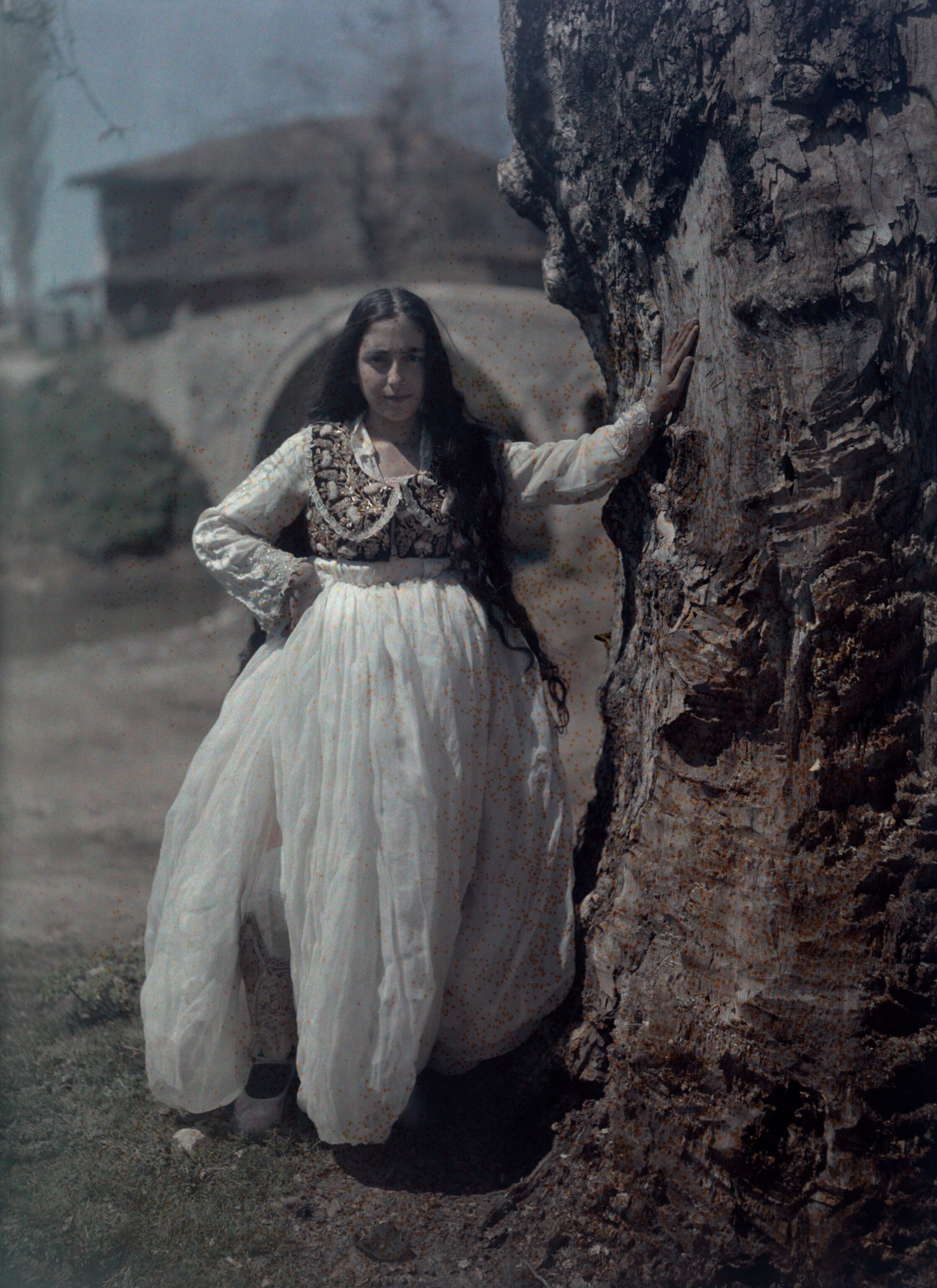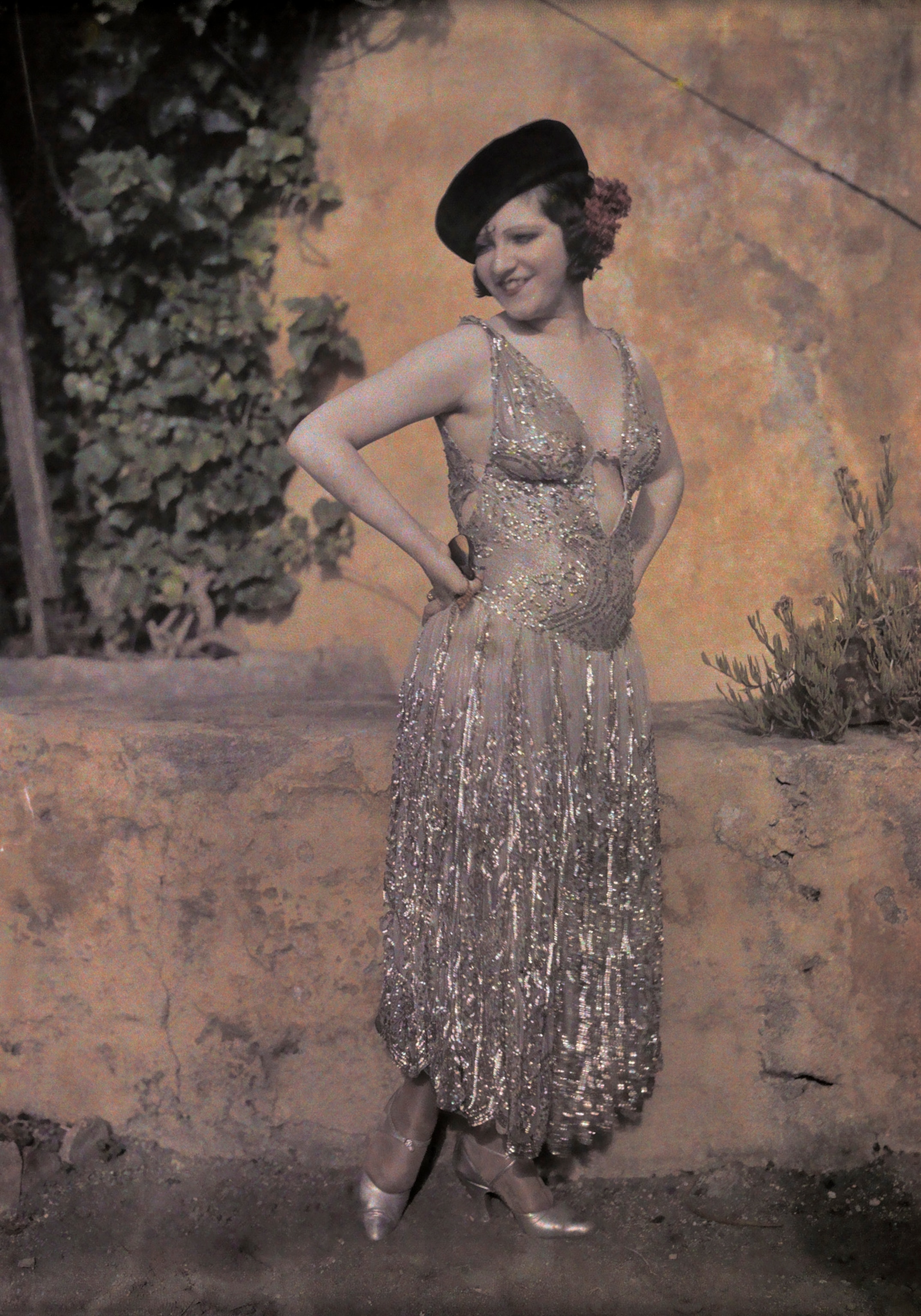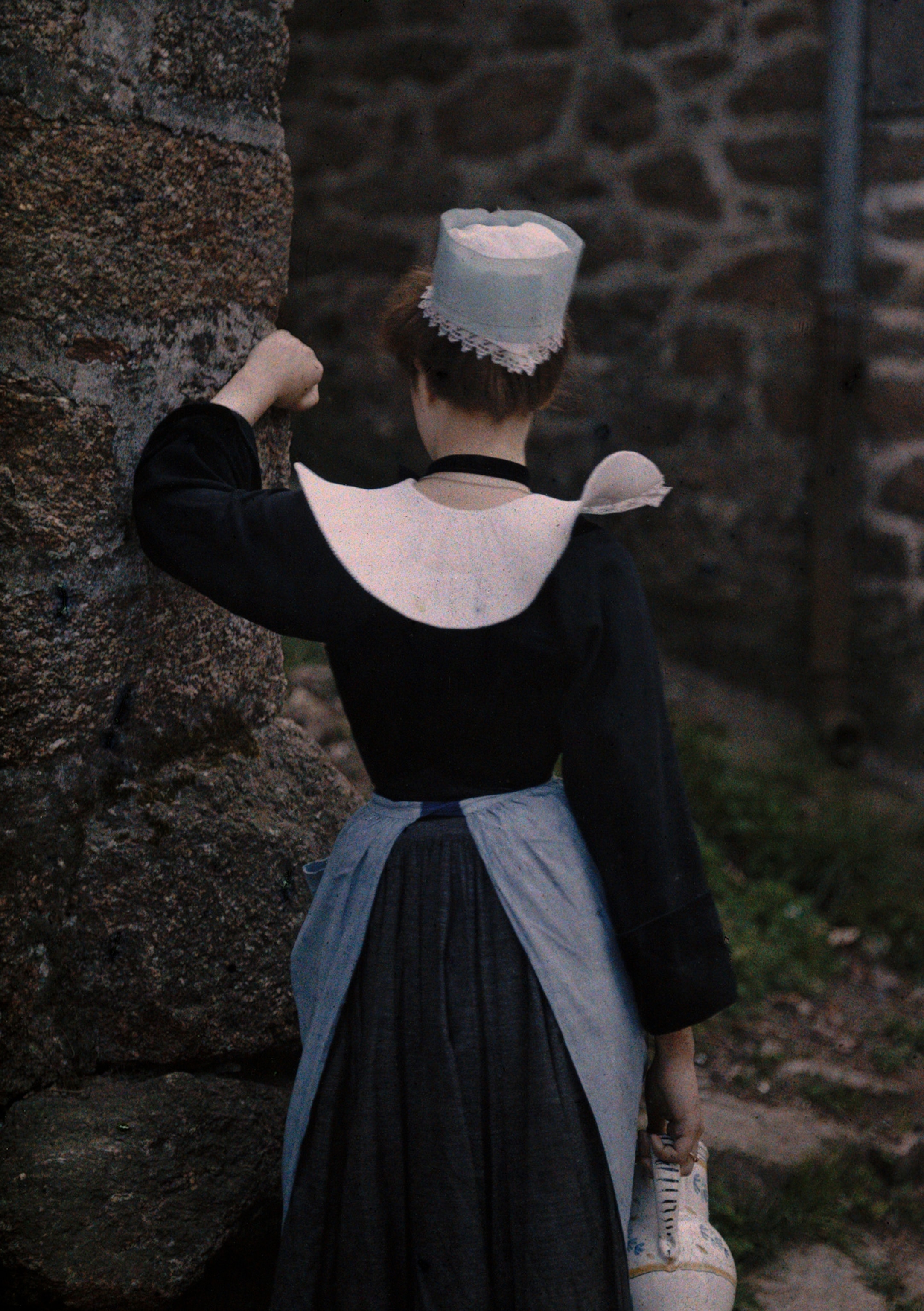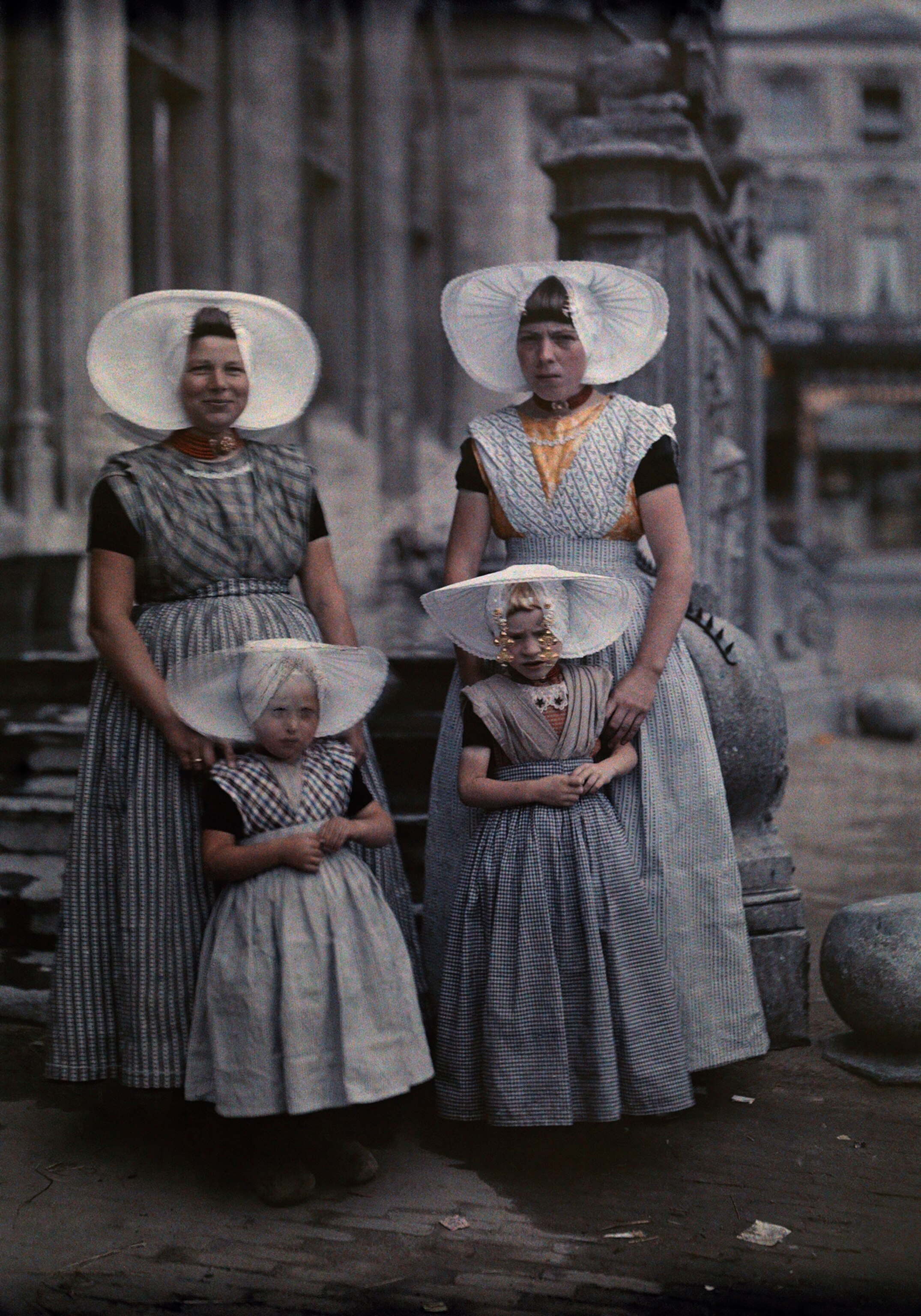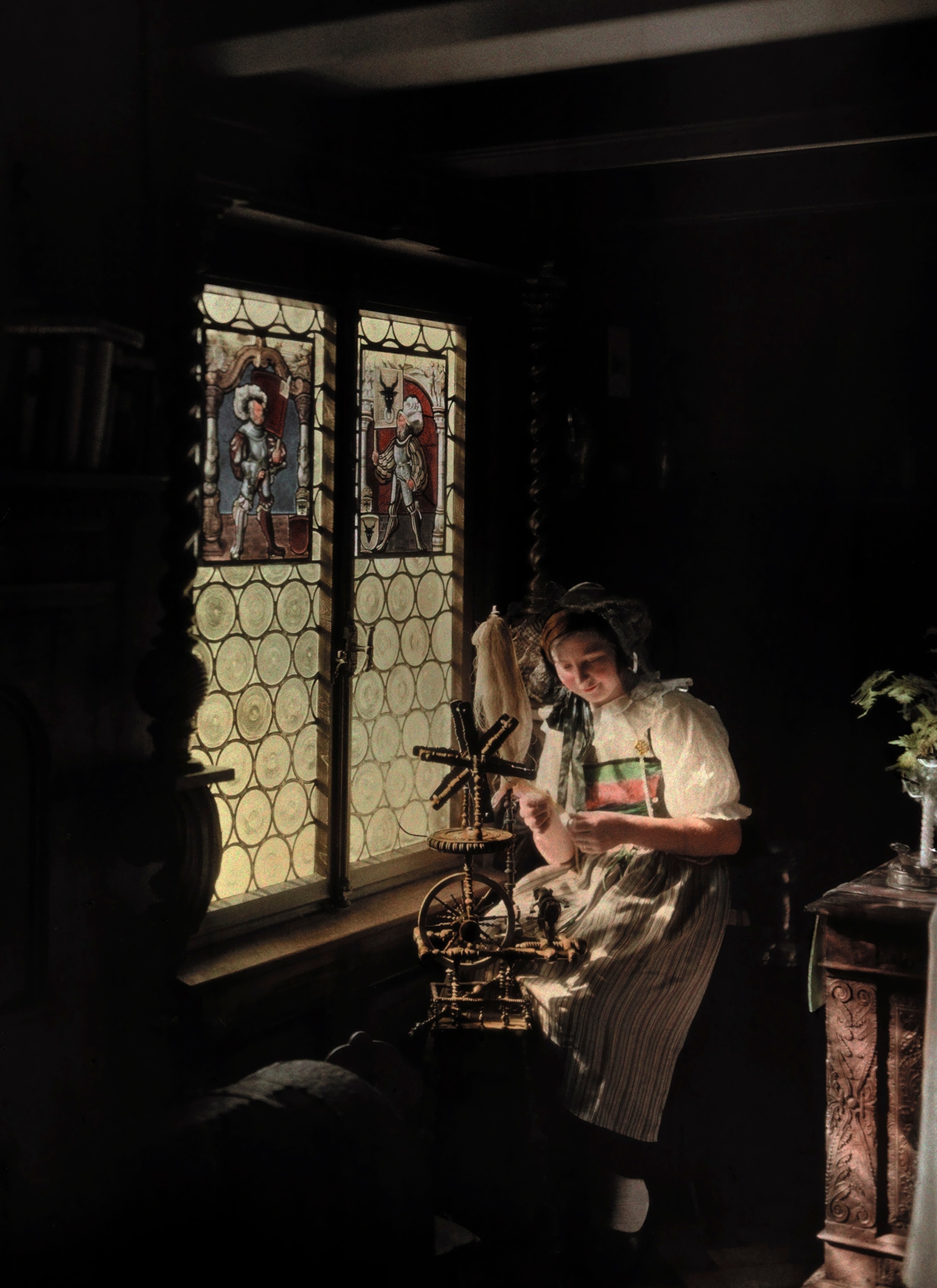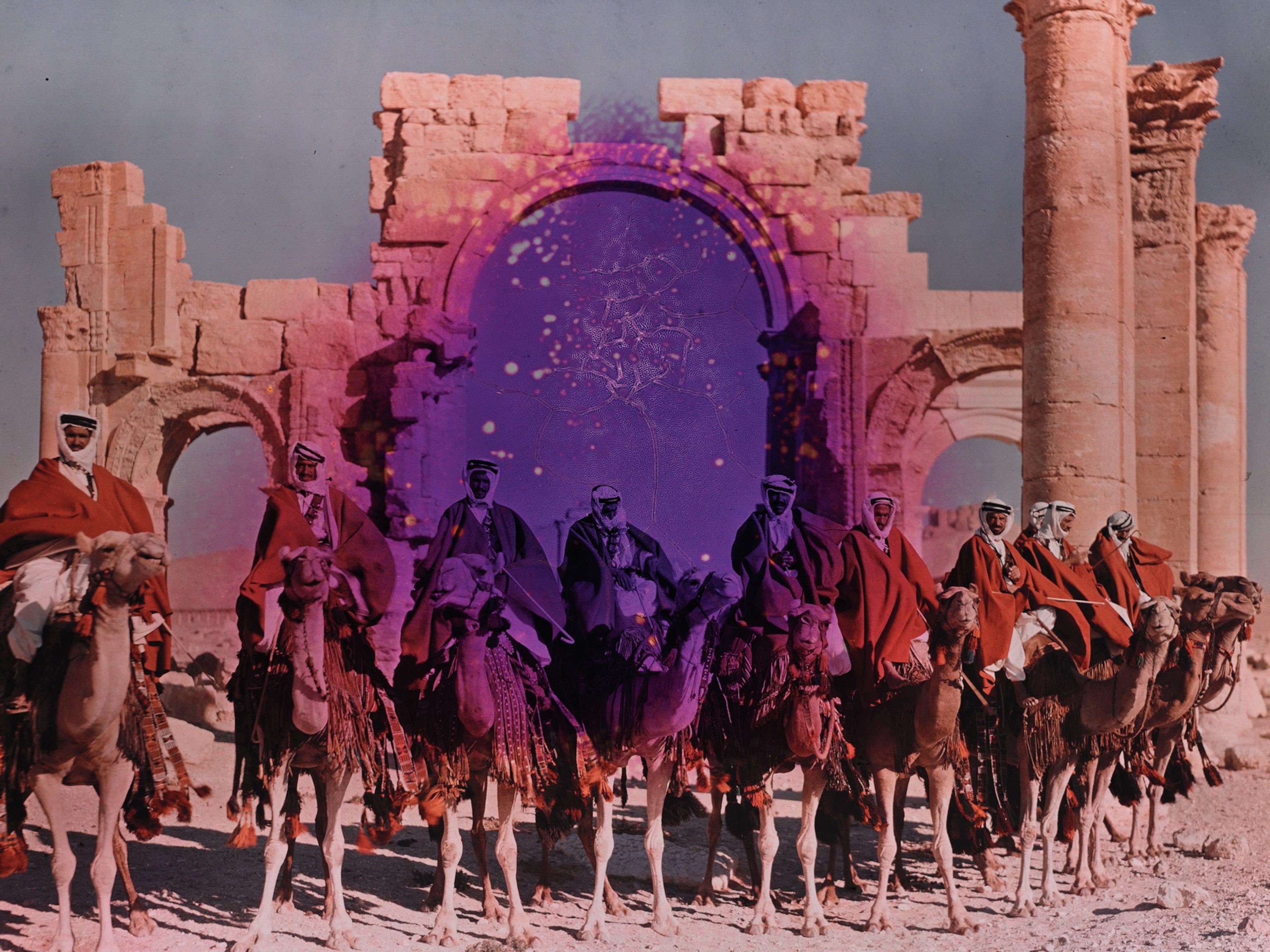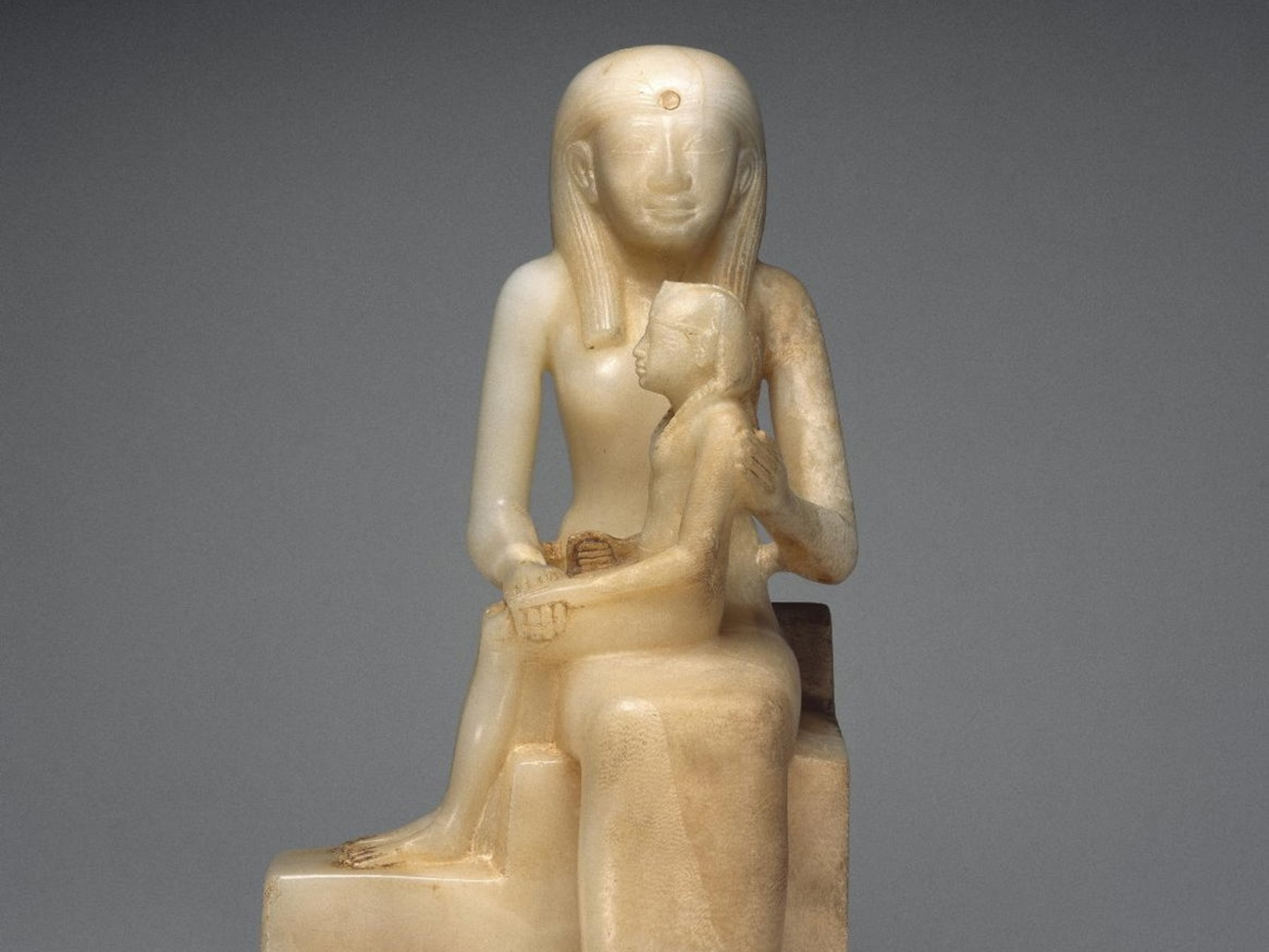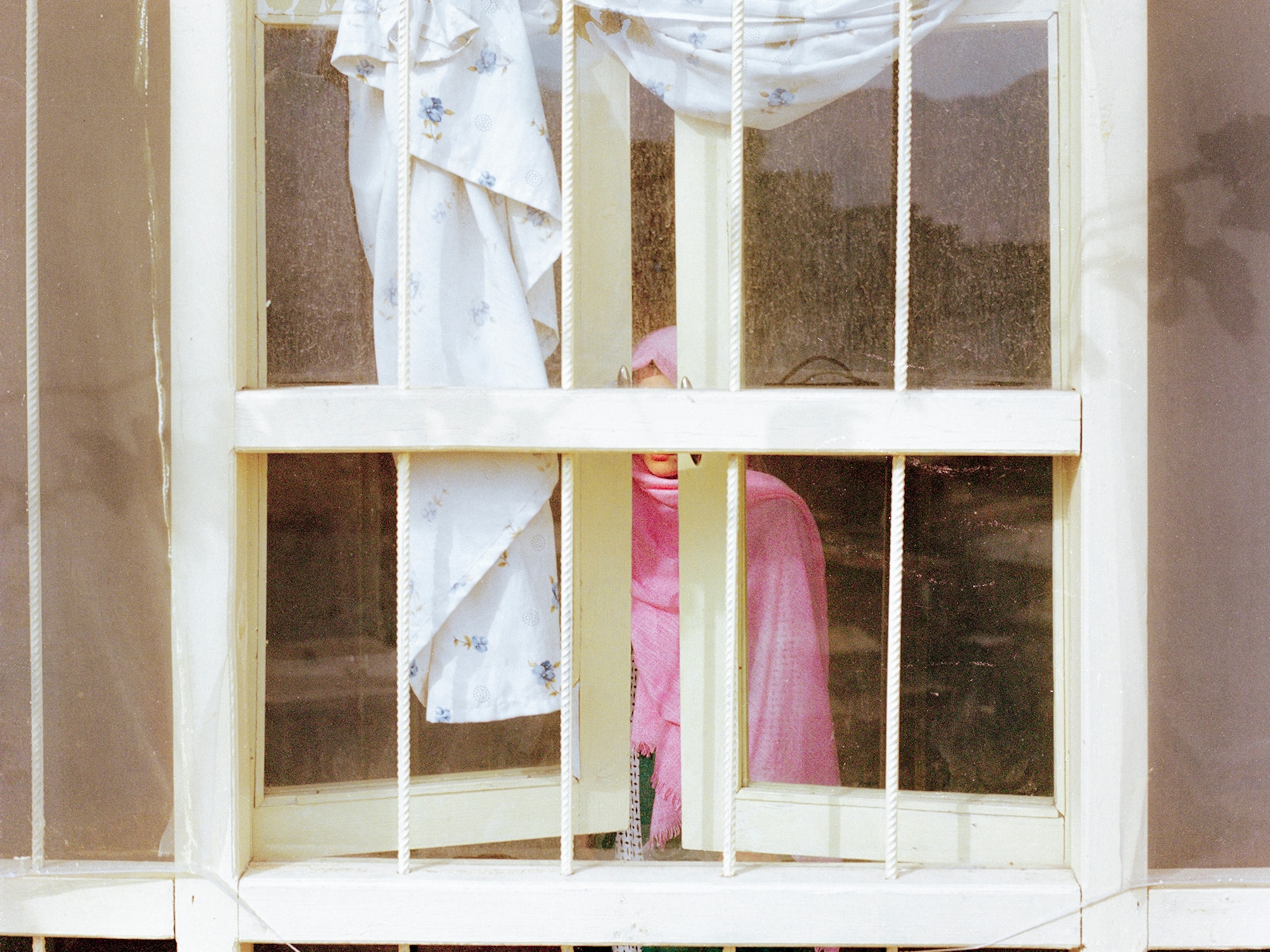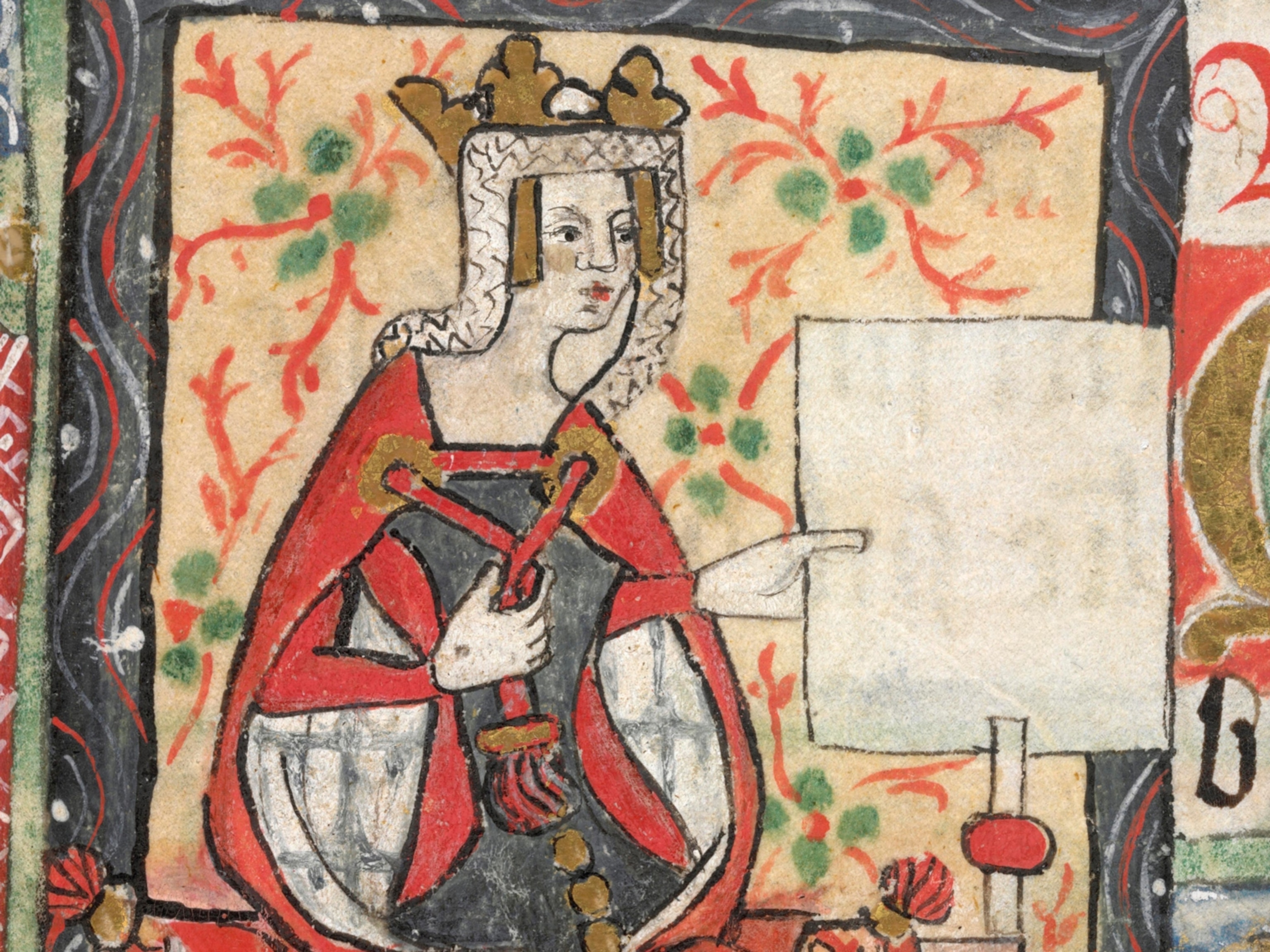Our Most Stunning Antique Photos of Women Around the World
An early form of color photography called autochrome gave pictures a "wonderful luminosity."
In 1907, brothers Auguste and Louis Lumière developed the first commercially viable form of color photography. Their process, called autochrome, used glass plates coated with millions of microscopic color filters, each one consisting of—believe it or not—a dyed, powdered grain of potato starch.
The starch grains essentially transformed the plate into a stained-glass window made of red, green, and blue dots, which filtered the light shining onto a light-sensitive emulsion. Up close, the resulting photographs looked like dots of various shades of red, blue, and green. But from a distance, viewers’ eyes blended the colors into muted, dreamlike tones—making autochromes look like pointillist paintings.
"That's one thing that's unique about the autochromes that you don't see with modern photos—that beautiful painterly look," says Bill Bonner, image collection archivist at National Geographic.
(These Beautiful Antique Photos Were Made With Potato Starch)
Photographers of the time gushed over autochromes. “I have no medium that can give me colour of such wonderful luminosity,” photographer Edward Steichen proclaimed in 1908.
Few outlets used autochromes to greater effect than National Geographic. The first natural color photograph to appear in National Geographic magazine was an Autochrome depicting a flower garden in Belgium, published in 1914 (see that picture). The archives of National Geographic have almost 15,000 glass autochrome plates, one of the largest collections in the world.
But by the late 1930s, virtually all publishers, including National Geographic, adopted Kodachrome as its standard color-photography film because it was easier to use. Autochrome required photographers to carry around heavy wooden suitcases filled with fragile glass plates; Kodachrome film, twinned with a 35mm camera, was light and traveled well.
Today digital photography reigns, but the autochrome plates in our archives provide a unique look into the past.
"We're all familiar with old black-and-white images, so much so that we often think of images from the early 1900s as being exclusively in black and white," says Adrian Coakley, photographic research editor at National Geographic.
"With autochrome, you're seeing those images in a way you wouldn't imagine them. It's like a look at history in color."
8 From the Archive is a weekly selection culled from National Geographic's archive, and curated by Archivist Bill Bonner and Senior Photo Editor Jessie Wender.
Becky Little contributed reporting.
Follow Michael Greshko on Twitter.
